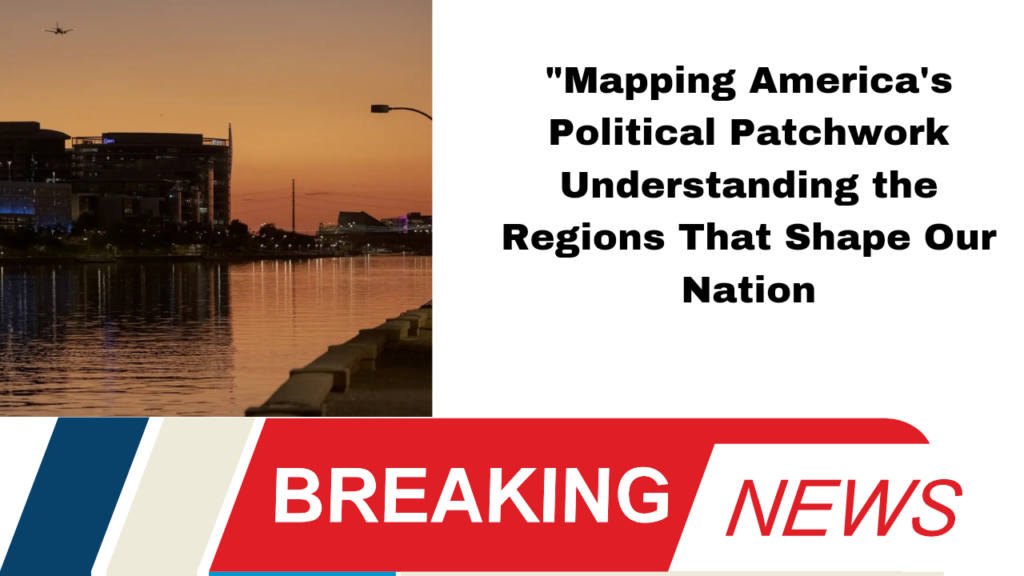As Election Day approaches, the United States reveals itself as a complex mosaic of regions, each with its own political and cultural identity. From the Rust Belt to the Sun Belt, these geographical terms are not just jargon; they reflect the diverse influences shaping the nation’s political landscape.
The Complexity of American Regions
Colin Woodard, author of “American Nations,” emphasizes that the United States is a multifaceted country where cultural and social realities often transcend state lines. “The actual underlying things that people are trying to describe often don’t match the state boundaries,” he notes. This complexity is especially apparent during presidential elections when regional dynamics come to the forefront.
The Color Code: Red, Blue, and Purple States
For decades, the media has categorized states as red or blue based on their political leanings. Red states predominantly support Republicans, while blue states lean Democratic. This color coding solidified during the contentious 2000 presidential election, when consistency in reporting became crucial. In contrast, purple states also known as swing states exhibit balanced support for both parties, often determining the election outcome.
The Blue Wall’s Fragility
Historically, the Blue Wall consists of states like New York, Massachusetts, Oregon, and California, which have reliably voted Democratic. However, the fragility of this wall was evident in 2016 when Donald Trump flipped key states like Wisconsin, Michigan, and Pennsylvania.
Regions are often defined by common traits, commonly referred to as belts.
Coined by political analyst Kevin Phillips in 1969, the Sun Belt spans from Florida to Southern California, encompassing states like Texas, Arizona, and parts of North Carolina. This region gained significance as white Democrats migrated here after the Civil Rights movement, paving the way for Republican growth.
The Midwest and the Heartland
The Midwest, defined by the Census Bureau, includes states like Illinois, Indiana, and Ohio. This area is often referred to as the Heartland, a term popularized in the 1960s to evoke a sense of American spirit and unity. The Great Plains, known for their agriculture, are also part of this region.
The Mountain West
The Mountain West features the Rocky Mountains and includes states such as Colorado and Utah. Depending on interpretation, this region may extend to Montana and New Mexico.
The term Flyover Country refers to the vast area between the East and West Coasts, often perceived as overlooked and underappreciated.
The Bible Belt, which includes states like Kentucky and Texas, is characterized by a strong presence of Protestant evangelical culture. Meanwhile, the Rust Belt encompassing parts of the Midwest has been historically defined by its former manufacturing and steel industries. This region has seen population declines as jobs have disappeared, leading to a shift in political dynamics.
Regions are also defined by their culinary traditions. The Grain Belt, or Corn Belt, stretches from Iowa to Ohio, while the Barbecue Belt spans the Carolinas, where local barbecue styles spark passionate debates.
At the center of American politics is Washington, D.C., encircled by the Beltway, a 64-mile interstate that defines the political landscape. This area symbolizes the heart of U.S. governance and political discourse
As America prepares for another presidential election, understanding these regional nuances is crucial. Each belt and region plays a significant role in shaping national politics, reflecting the rich tapestry of American identity. As we navigate this complex landscape, it’s clear that the interplay of these regions will be pivotal in determining the future direction of the country.











More Stories
The Electoral College Debate A Closer Look at Its Impact on Modern Elections
November’s Unsettling Tropical Outlook Potential Storms Loom in the Atlantic
Biden’s Spooktacular Halloween Bash at the White House